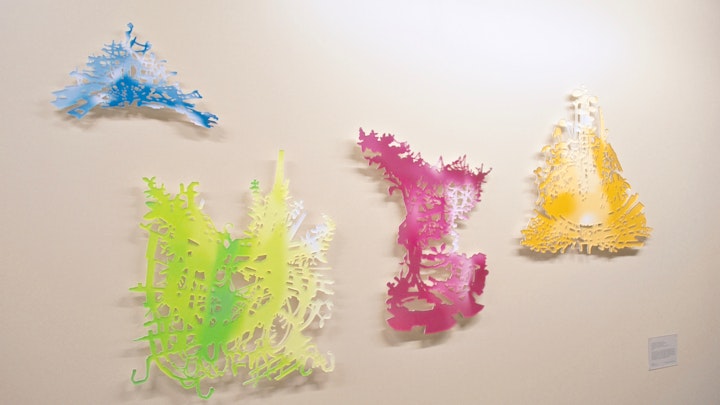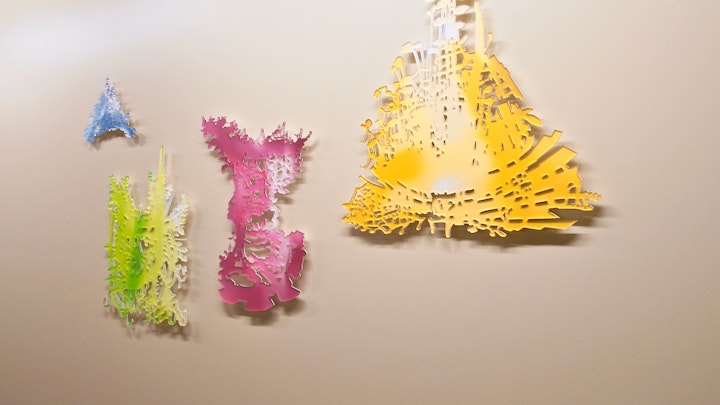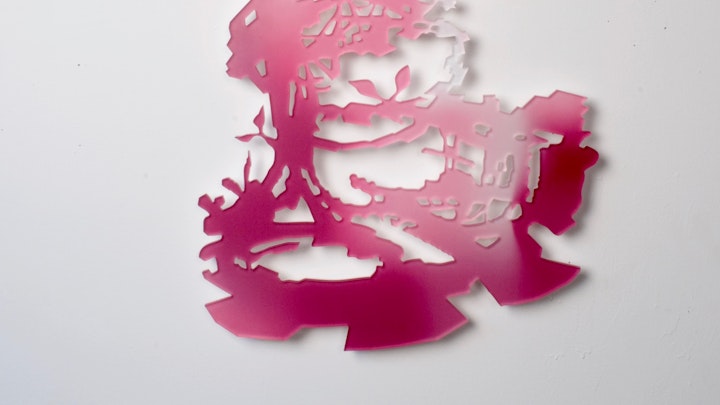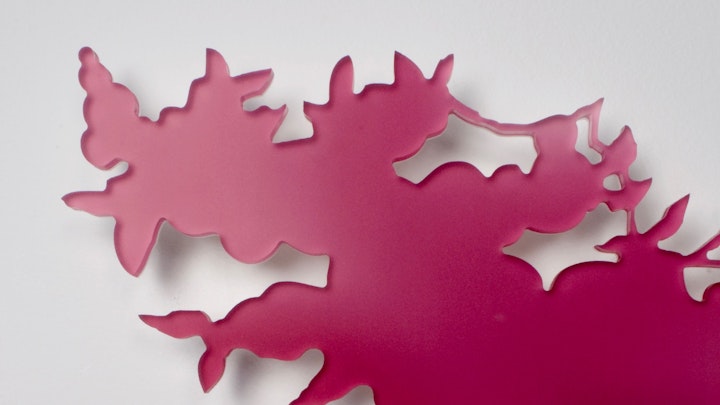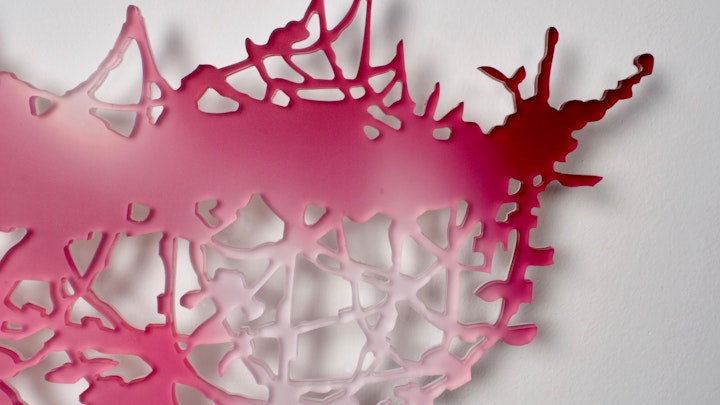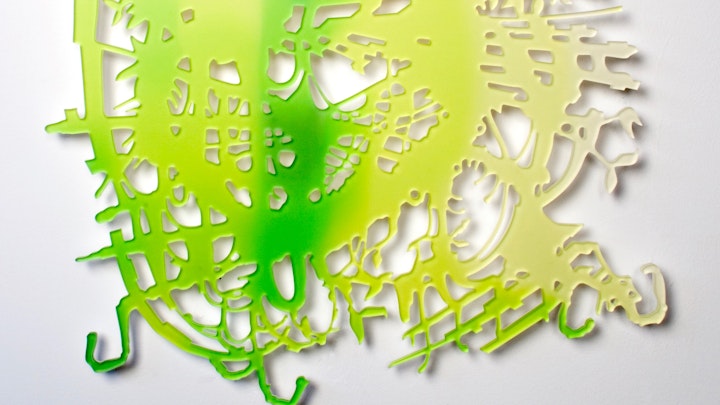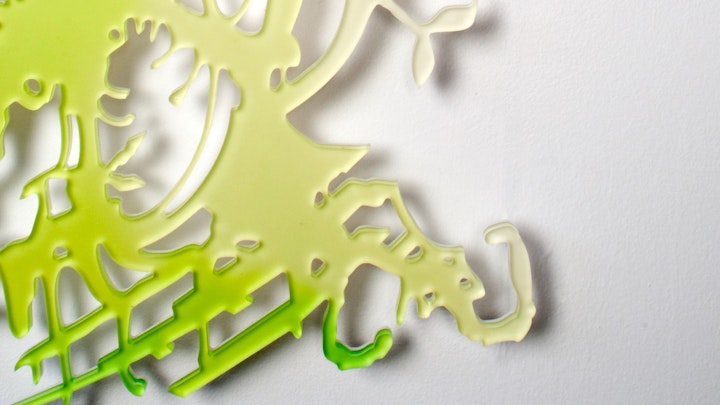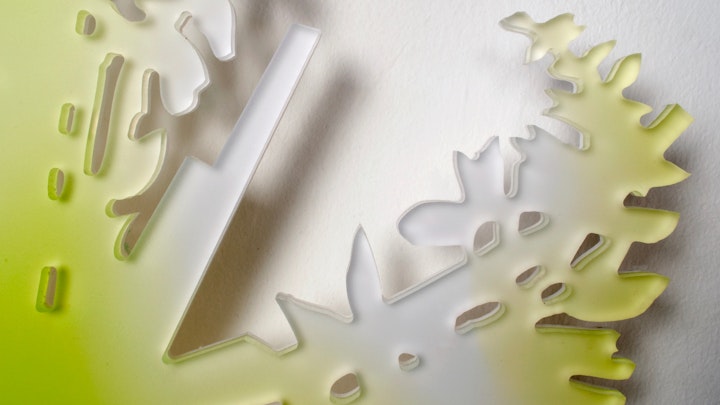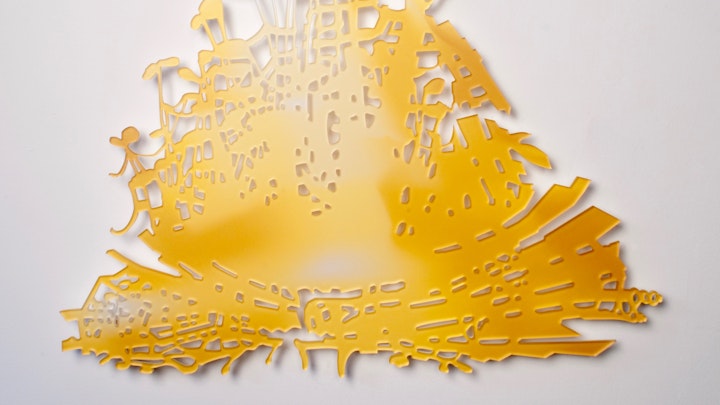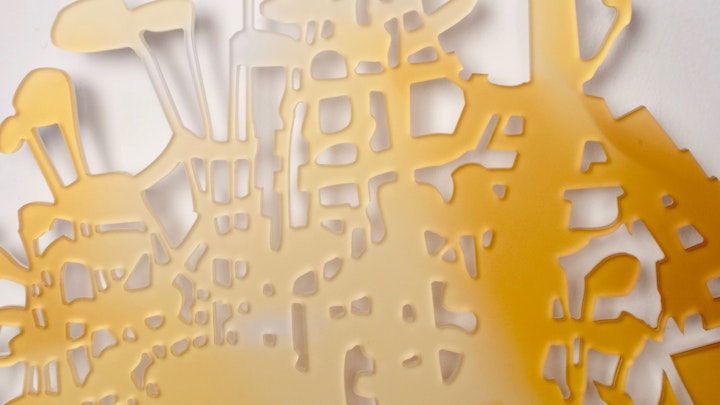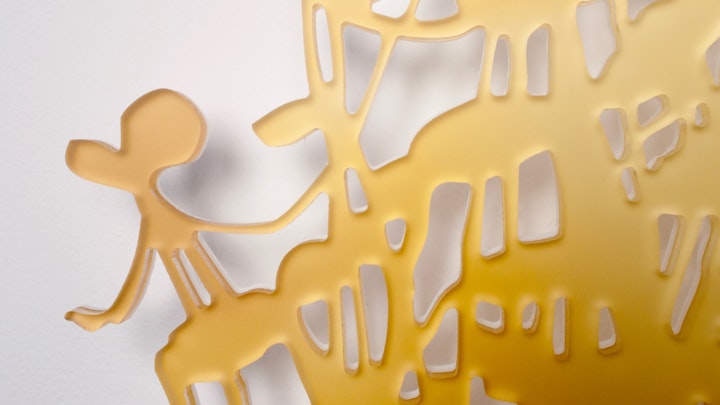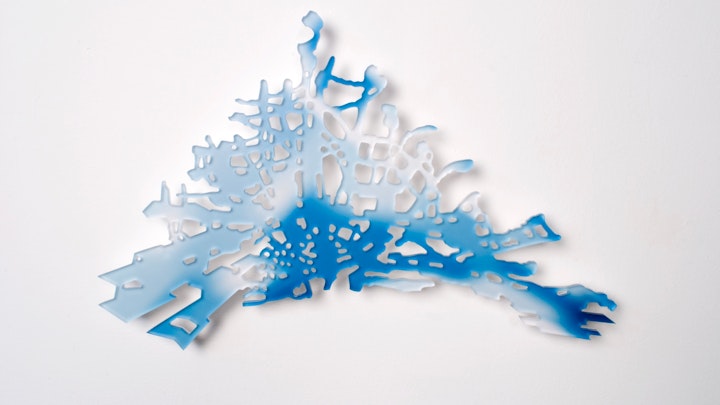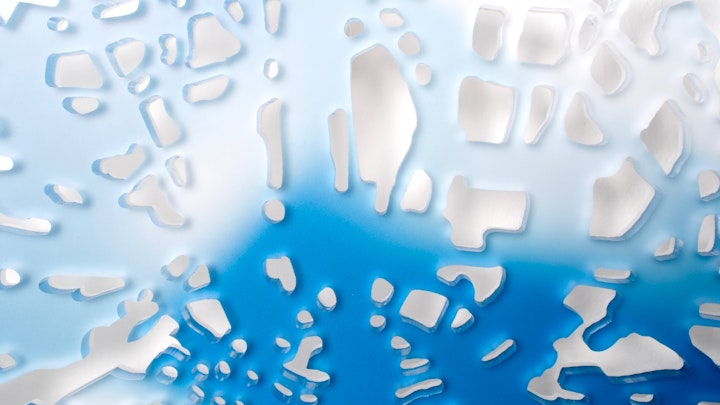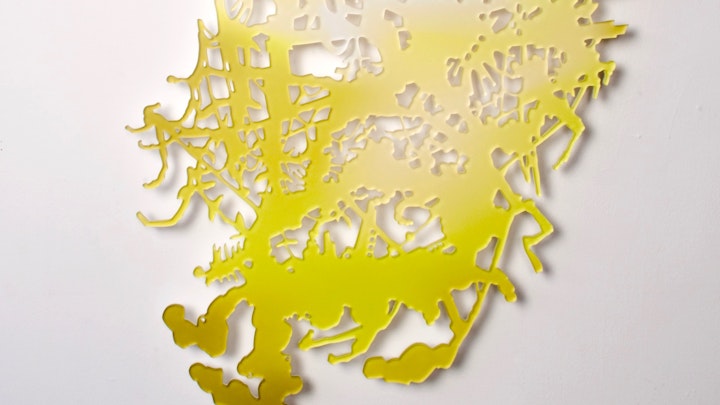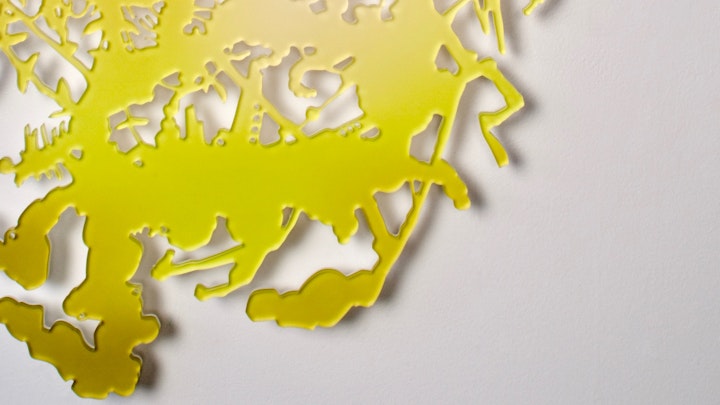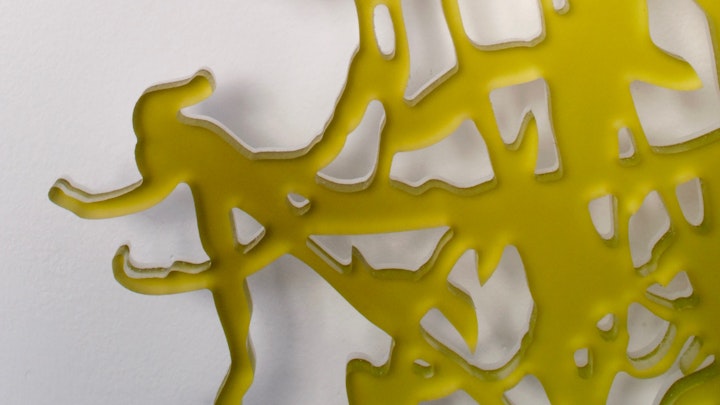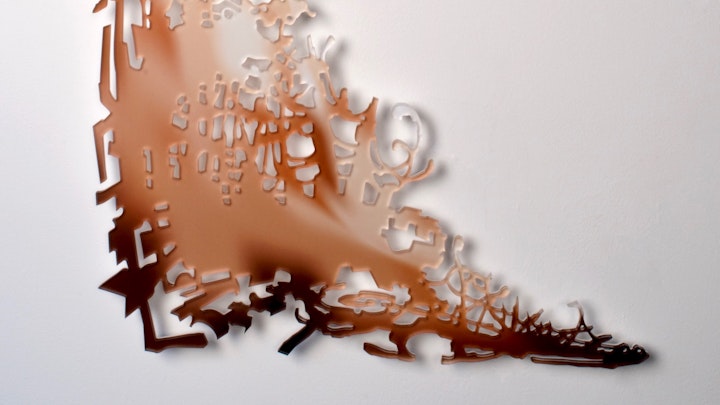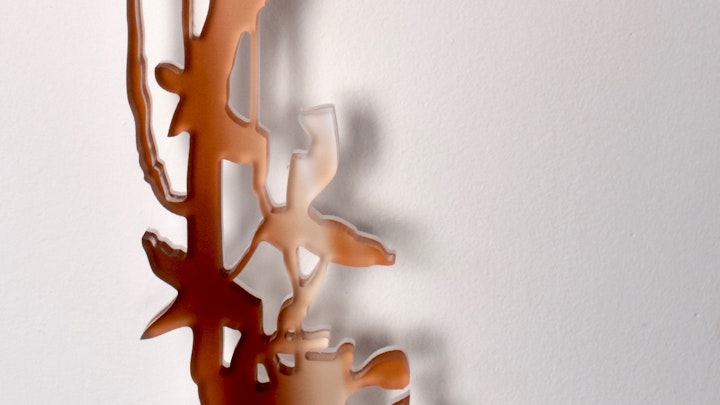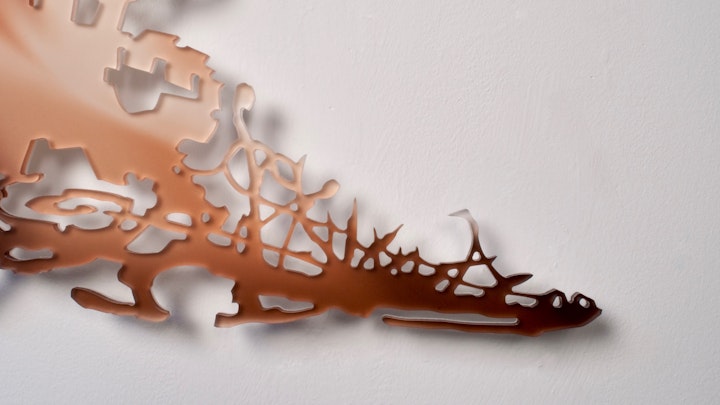Gleaming Without Us
2008
various sizes | machined cast acrylic sheet, ultra chrome print | 2008
I wonder if its possible to crystalize a rainbow?
My installations have become increasingly more immersive; the atmosphere has swollen beyond the typical white light and shadowing used in the past. The space now seethes with color and movement. I want to capture that fleeting moment, tamp down the light and make it into a physical object.
Gleaming Without Us utilizes a new type of material that seems to actually capture light. This particular medium can optically contain the atmosphere created within the Dewdrop installations. Combining cast acrylic and color digitally outputted from the HD projections, a special substrate is produced from which my drawings are machine cut.
This works’ title and drawn images stems from Alan Wiesman’s book, The World Without Us where the author creates a thought-experiment describing a world after the human race hypothetically vanishes. The thrust of the book illustrates nature’s power to quickly proliferate into our niche left behind. The idea of nature, completely unhindered, is the starting point for this new series of work. The drawings themselves are compact vignettes of a possible future hybrid landscape.
Although I begin each piece as a unique cut-out knife-drawing on paper, the finished work is, again, a product of a multistep process. Once the cut-out drawing is created, it goes through many transformations: first it is photographed, then digitized, bit-mapped, digitally manipulated, vectored, splined, and then routed from the composite material. Each step adds a unique, synthetic, signature to the result. Every interpolation creates a new generation: lines get tweaked; corners get softened; shapes get lost; and errors crop up. After several generations, the resulting object is a transmutation from the original object—something hand-cut and organic morphs into something machine-rendered and synthetic. This transformation may also be further analogous to possible biological retrogress when we consider the current precarious state of the world’s global climate conditions.
Most of this work has been placed in the Microsoft Collection.

